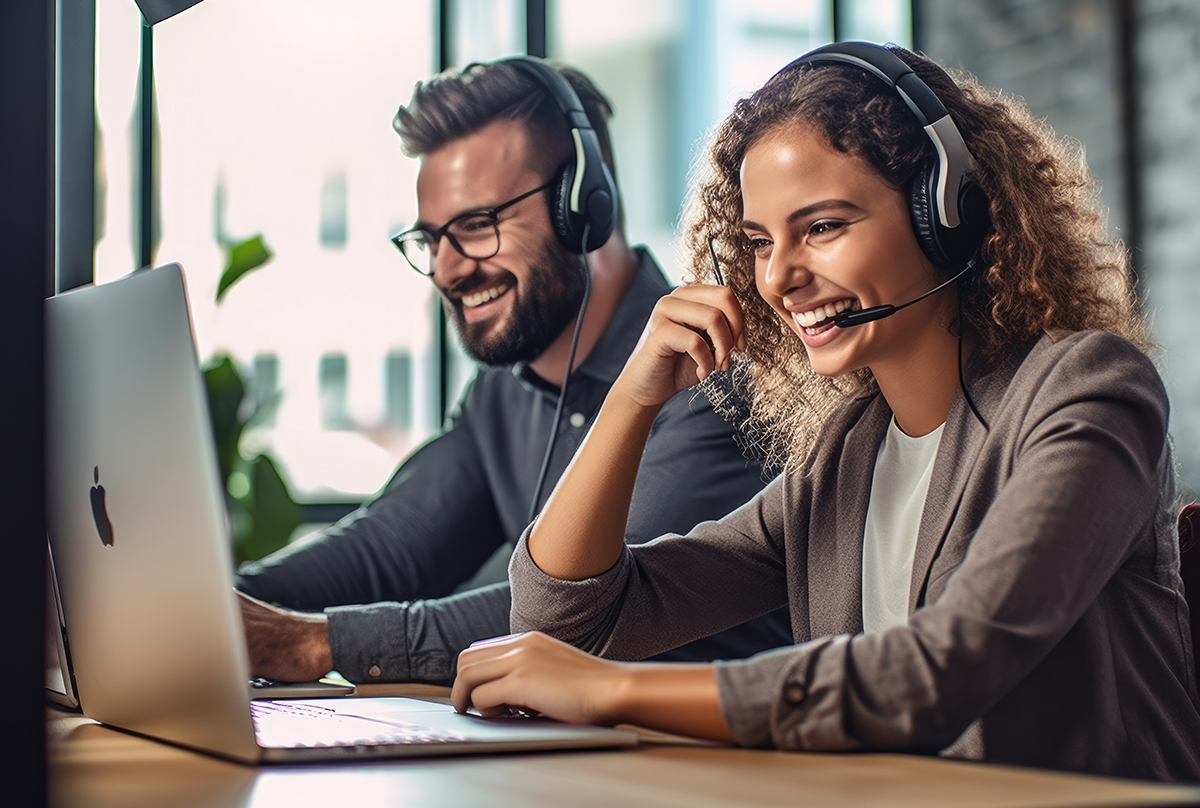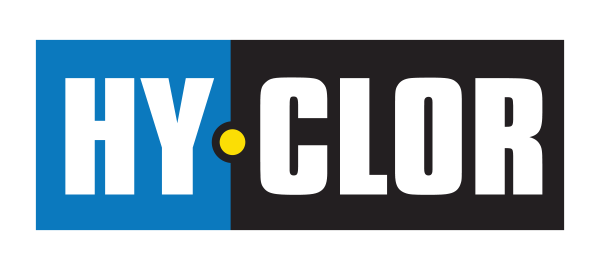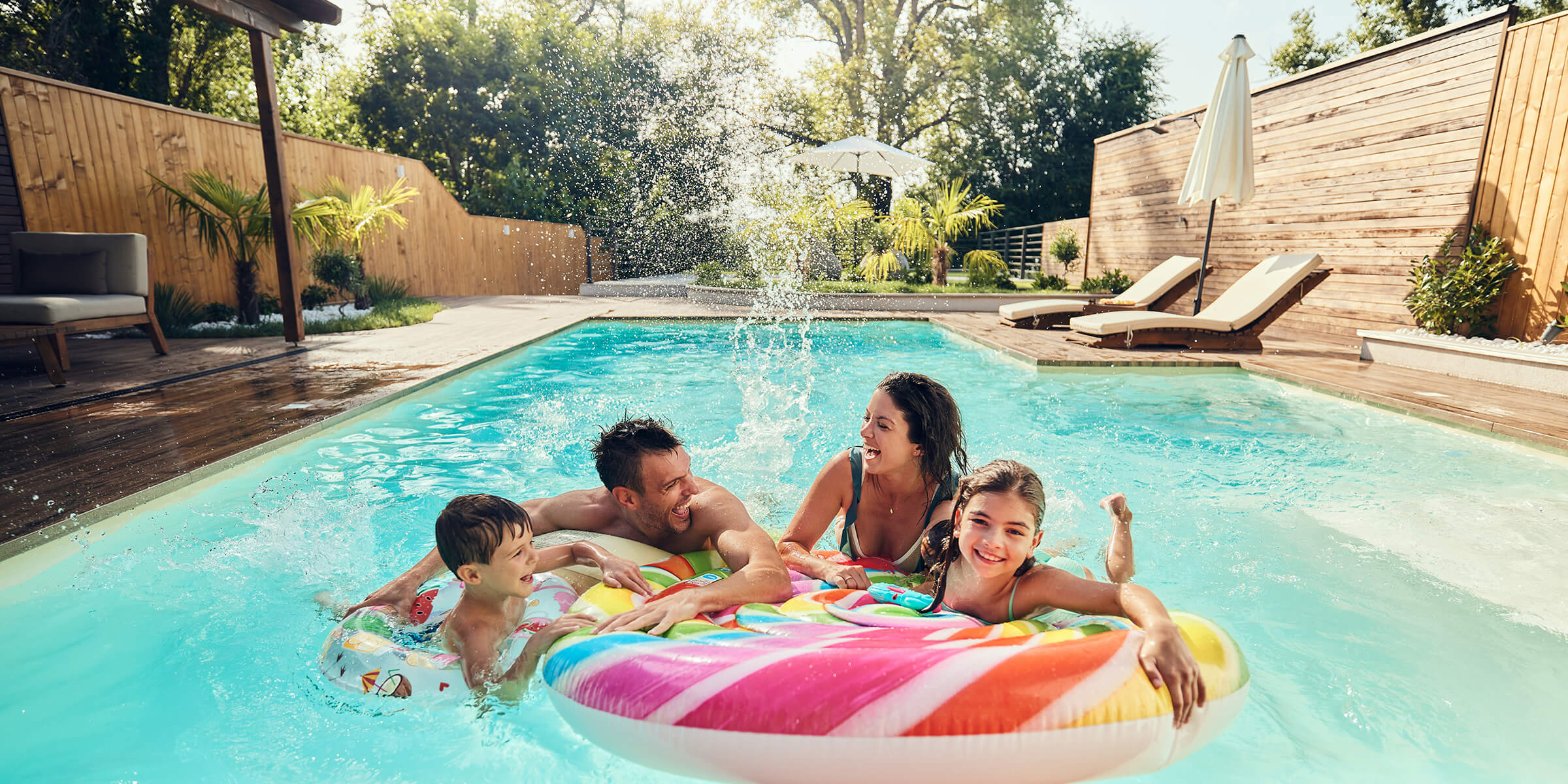Understanding basic pool maintenance chemicals is the secret weapon to a sparkling clean and safe swimming experience.
This comprehensive pool chemicals for beginners guide will unveil the essential chemicals needed for a healthy pool, explore their functions, and equip you with tips for safe handling and effective use.
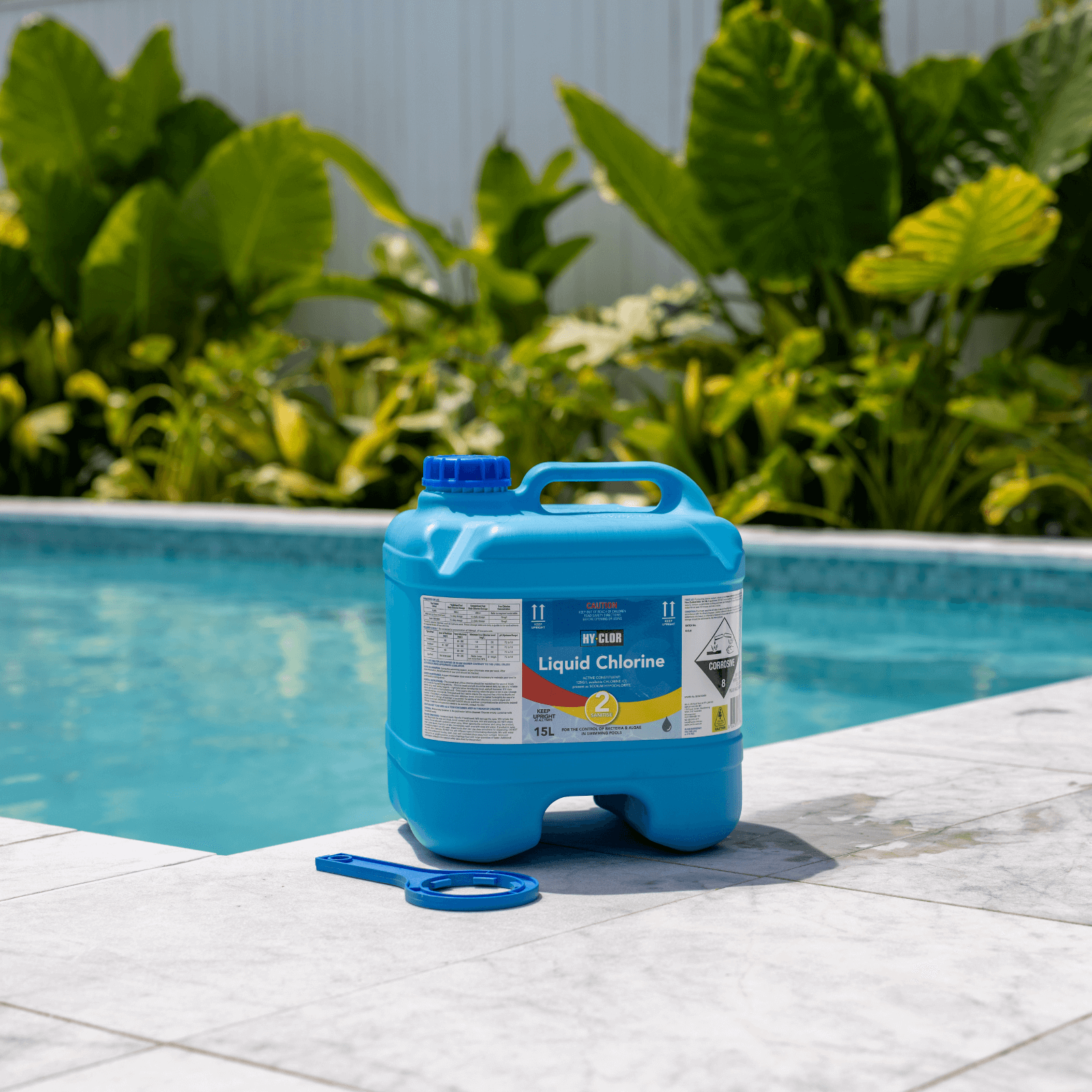
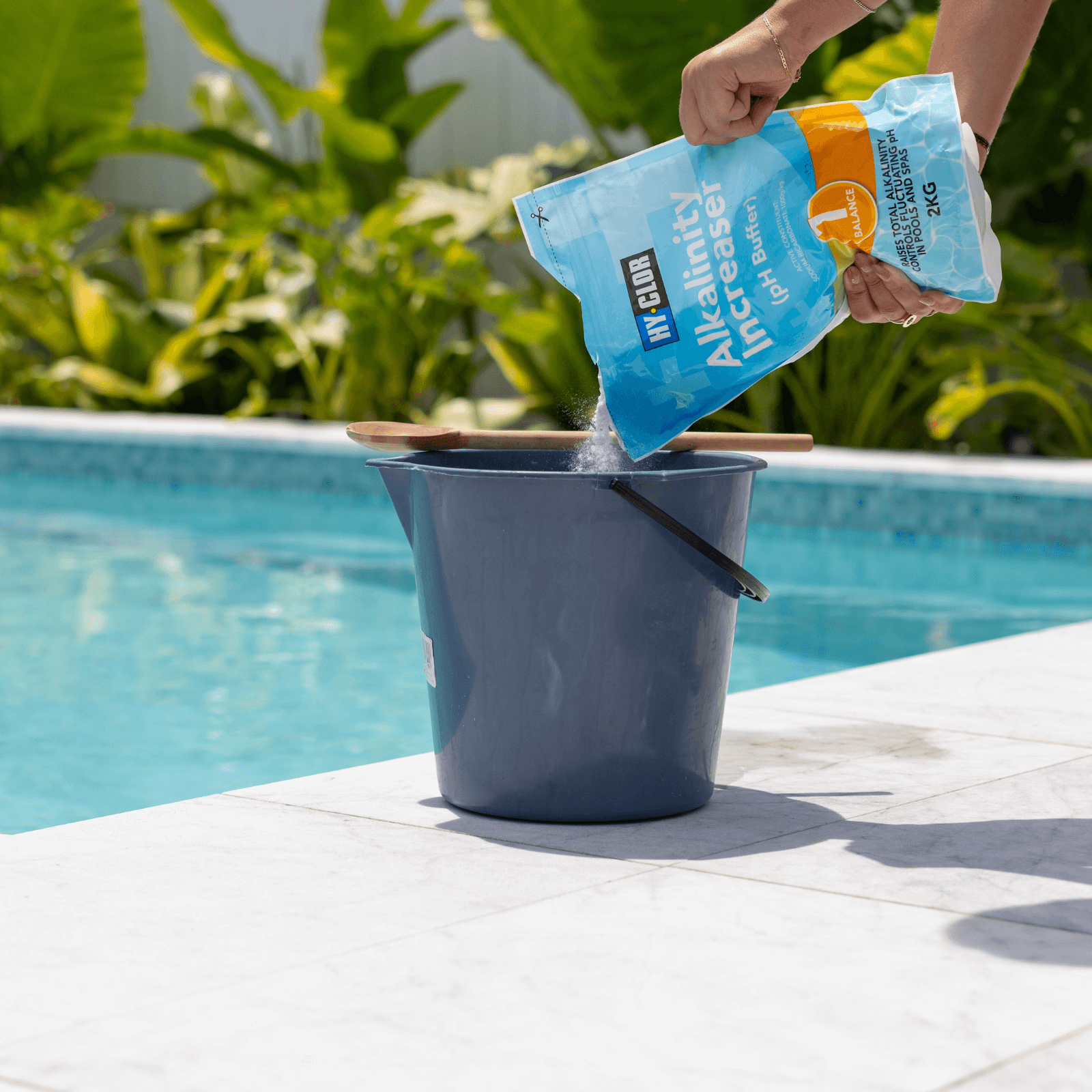
Types of Pool Maintenance Chemicals
Mastering pool chemistry ensures a safe and hygienic swimming environment and prolongs the life of pool equipment and surfaces by preventing bacteria, corrosion, and scale buildup.
Here is a list of pool chemicals and what they do:
- Sanitisers: The guardians of your pool, sanitisers eliminate harmful bacteria, algae, and other contaminants.
Here are some great Hy-Clor options:
- Granular Chlorine: This popular choice provides long-lasting chlorine residual for continuous disinfection.
- Long-Lasting Chlorine Tablets: Slow-dissolving tablets offer a convenient way to maintain chlorine levels.
- Liquid Chlorine: Ideal for a quick chlorine boost and is convenient as no mixing is required.
- 3 in 1 Granular Chlorine: This chlorine includes a stabiliser. Stabiliser, at the correct levels, makes your chlorine twice as effective as unstabilised water, thereby allowing you to use less chlorine.
- Balancers: pH and alkalinity are crucial for a healthy pool environment. pH measures water acidity or basicity, affecting swimmer comfort and sanitiser effectiveness. Alkalinity buffers and stabilises pH levels, preventing drastic changes and keeping the water safe.
Hy-Clor provides solutions to keep these levels in check:
- pH Increaser: Raises pH levels in acidic pools for optimal sanitiser performance and swimmer comfort.
- pH Decreaser: Lowers pH levels in overly alkaline pools, ensuring proper chemical balance.
- Alkalinity Increaser: Helps maintain a steadier pH.
- Algaecides: Algae can be a persistent enemy of pool clarity, as it thrives in warm, sunny conditions and can quickly spread if not properly managed.
Hy-Clor offers various algaecide options:
- Hy-Clor Algaecide: A preventative algaecide that helps prevent algae growth before it starts.
- Longlife Algaecide: A copper-based algaecide that stays in the pool for longer. A great option over winter or when going away.
- Blackspot and Algae Remover: Effectively tackles black algae, a more challenging type.
- Clarifiers: While filtration removes large debris, microscopic particles can make your pool water appear cloudy.
Hy-Clor clarifiers help:
- Cloud Out: Binds fine particles that cloud pool water together, allowing them to be captured by the filter.
- Flocculent: High-strength and fast-acting, removing suspended particles from extremely cloudy pool water.
Remember, this is just a glimpse into the Hy-Clor pool care arsenal. We offer a comprehensive range of products to address all your pool maintenance needs.
Using Chemicals Safely and Effectively
It’s crucial to handle pool chemicals with respect. This section provides essential tips for safe chemical use and application.
Always read and follow label instructions carefully. Different chemicals have varying application methods and safety precautions.
Wear appropriate personal protective equipment (PPE). This may include gloves, goggles, and long sleeves when handling chemicals.
Never mix chemicals directly. Doing so can create harmful fumes or even explosions. Always add chemicals to water, not the other way around.
Store chemicals properly. Keep them in their original containers, in a cool, dry, and well-ventilated location, out of reach of children and pets.
Smart Application:
- Test water before adding chemicals: Regularly check the pool’s pH, chlorine levels, and other parameters using a quality test kit to determine the appropriate chemical adjustments.
- Add chemicals only when necessary. Don’t overshoot – exceeding recommended dosages can disrupt the chemical balance and irritate swimmers’ eyes and skin.
- Target specific areas for some chemicals. For instance, algaecide can be applied directly to areas with visible algae growth.
- Run your pool filter for several hours after adding chemicals. This ensures proper circulation and distribution throughout the pool.
Following these simple yet vital steps lets you keep your pool sparkling and your family swimming worry-free.


Routine Chemical Maintenance Schedule
A consistent routine of cleaning, balancing chemicals, and proper filtration is key to maintaining a sparkling pool.
Here’s a quick guide:
Testing:
- Weekly: Test pH, chlorine/bromine, and alkalinity.
- Hy-Clor Kits: Choose strips, kits or a digital tester for easy analysis.
Adding Chemicals:
- Sanitiser: Every few days (frequency varies).
- Balancers: Every other week (adjust based on test results).
- Algaecide: Weekly prevention, targeted treatments for outbreaks.
- Clarifier: As needed for cloudy water.
By testing and adjusting your pool’s chemistry regularly, you’ll create a healthy and inviting oasis for summer fun!
Troubleshooting Common Pool Chemical Issues
Even with regular maintenance, occasional pool problems can arise.
Here’s how to tackle common issues and adjust chemical levels effectively:
Problem: Cloudy Water
Solution: Test and adjust chemicals (particularly pH and sanitiser levels). Consider using a clarifier to flocculate tiny particles for easier filtration.
Problem: Algae Blooms
Solution: Identify the algae type (green, yellow, black) and use a targeted algaecide treatment. Proper sanitiser and pH levels must also be maintained to prevent this. Use this link to see the full range of Hy-Clor algaecides.
Problem: Skin and Eye Irritation
Solution: Test and adjust pH. Imbalanced pH can cause irritation. Maintain proper chlorine/bromine levels for effective sanitisation.
Chemical Adjustments: When test results indicate imbalances, use Hy-Clor pH Increaser/Decreaser or Alkalinity Increaser to raise levels as needed. Always follow label instructions for proper dosage based on your pool size.
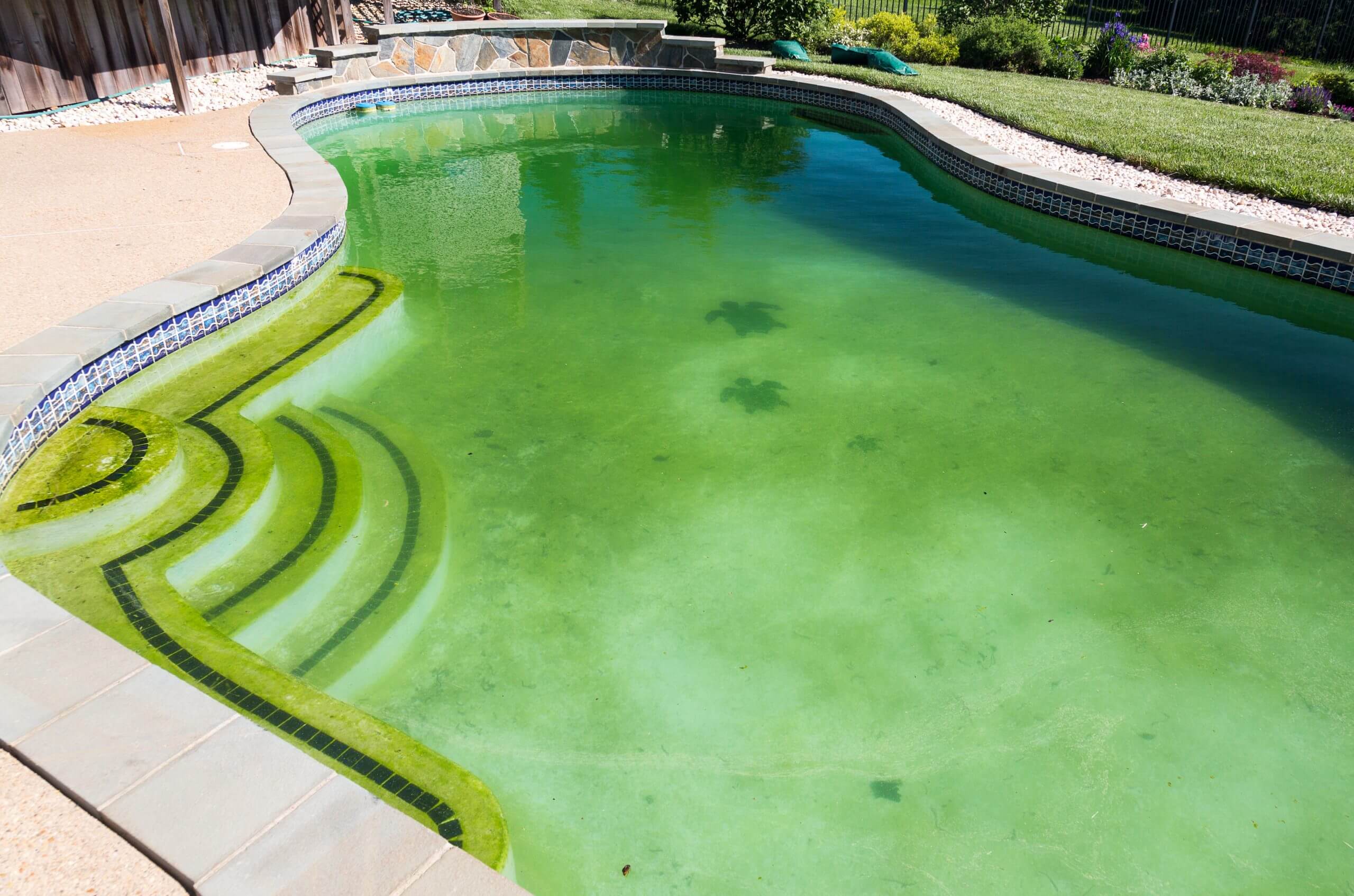
FAQs About Pool Maintenance Chemicals
You should check your pool chemical levels at least once a week to ensure proper balance and safety. Consider testing more frequently during periods of heavy use, extreme weather, or noticeable changes in water quality.
Always handle pool chemicals in a well-ventilated area and wear protective gear such as gloves and goggles. Store chemicals in a cool, dry place, away from direct sunlight and out of reach of children and pets.
Using a pool test kit or test strips to measure chlorine levels, you can determine if your pool has the right amount of chlorine. The ideal range for chlorine in a pool is typically between 1-3 parts per million (ppm).
Explore Hy-Clor Chemicals Today for a Sparkling Clean Pool Tomorrow
Maintaining a pristine and healthy pool doesn’t have to be a mystery.
By understanding the essential pool chemicals and following a consistent routine, you can achieve that sparkling oasis you’ve always dreamed of.
Hy-Clor offers a complete range of pool maintenance chemicals to address all your needs, from effective sanitisers and balancers to powerful algaecides and clarifying solutions.
Visit our website or your nearest Bunnings Store to explore the Hy-Clor difference and find the perfect products for your pool.
Remember, with Hy-Clor as your partner; you can spend less time worrying about chemicals and more time enjoying dips in your sparkling clean pool!
